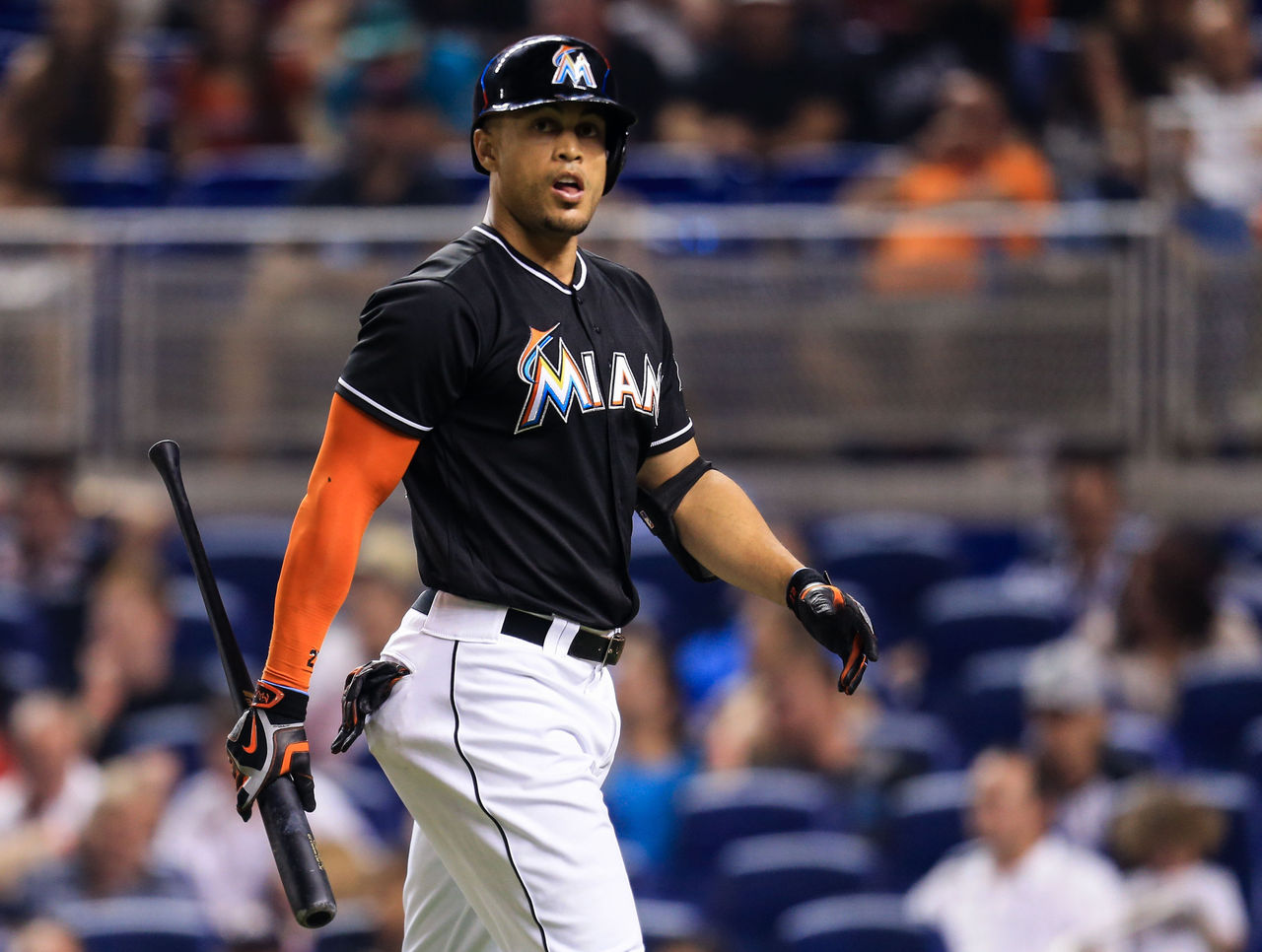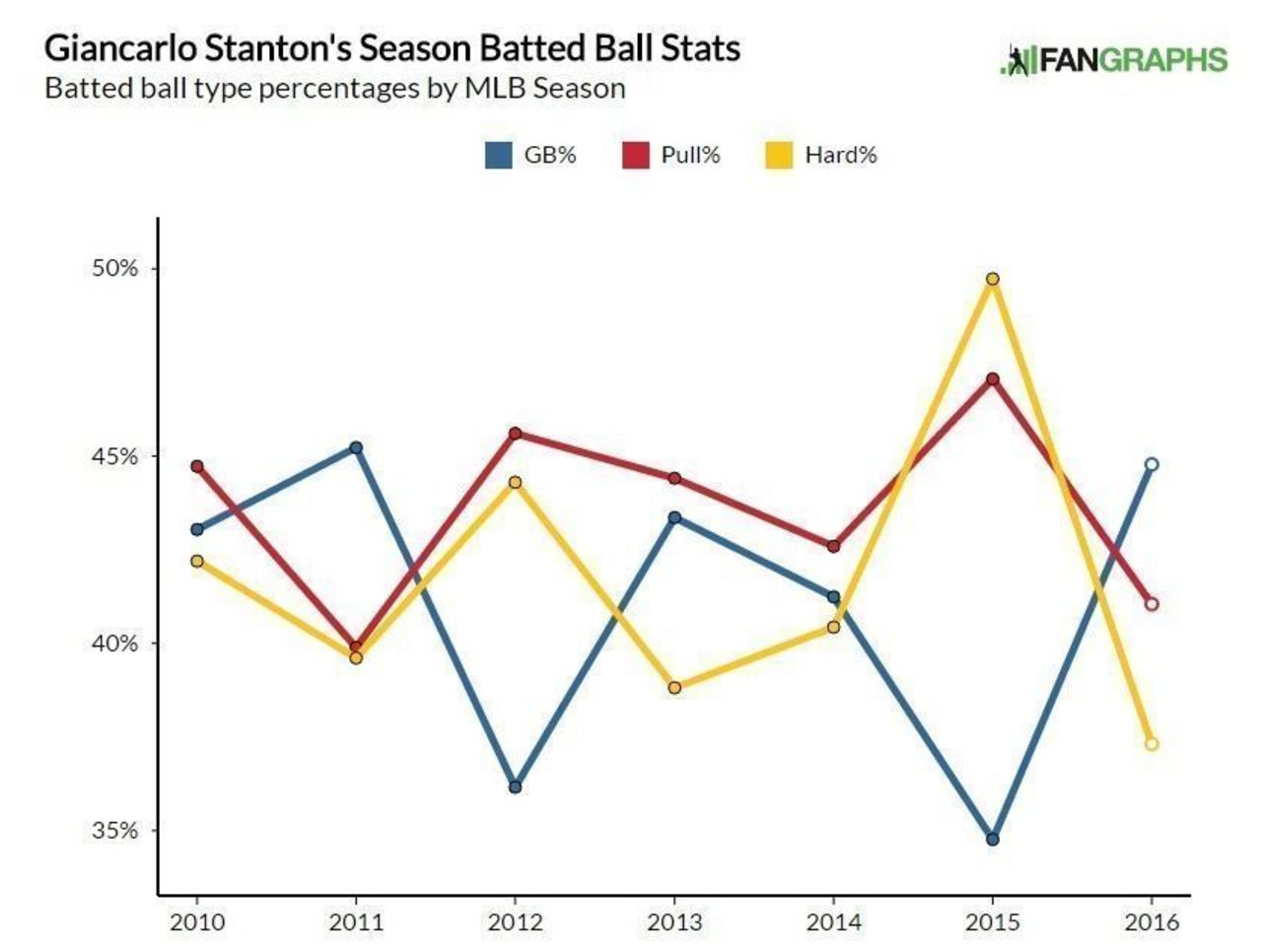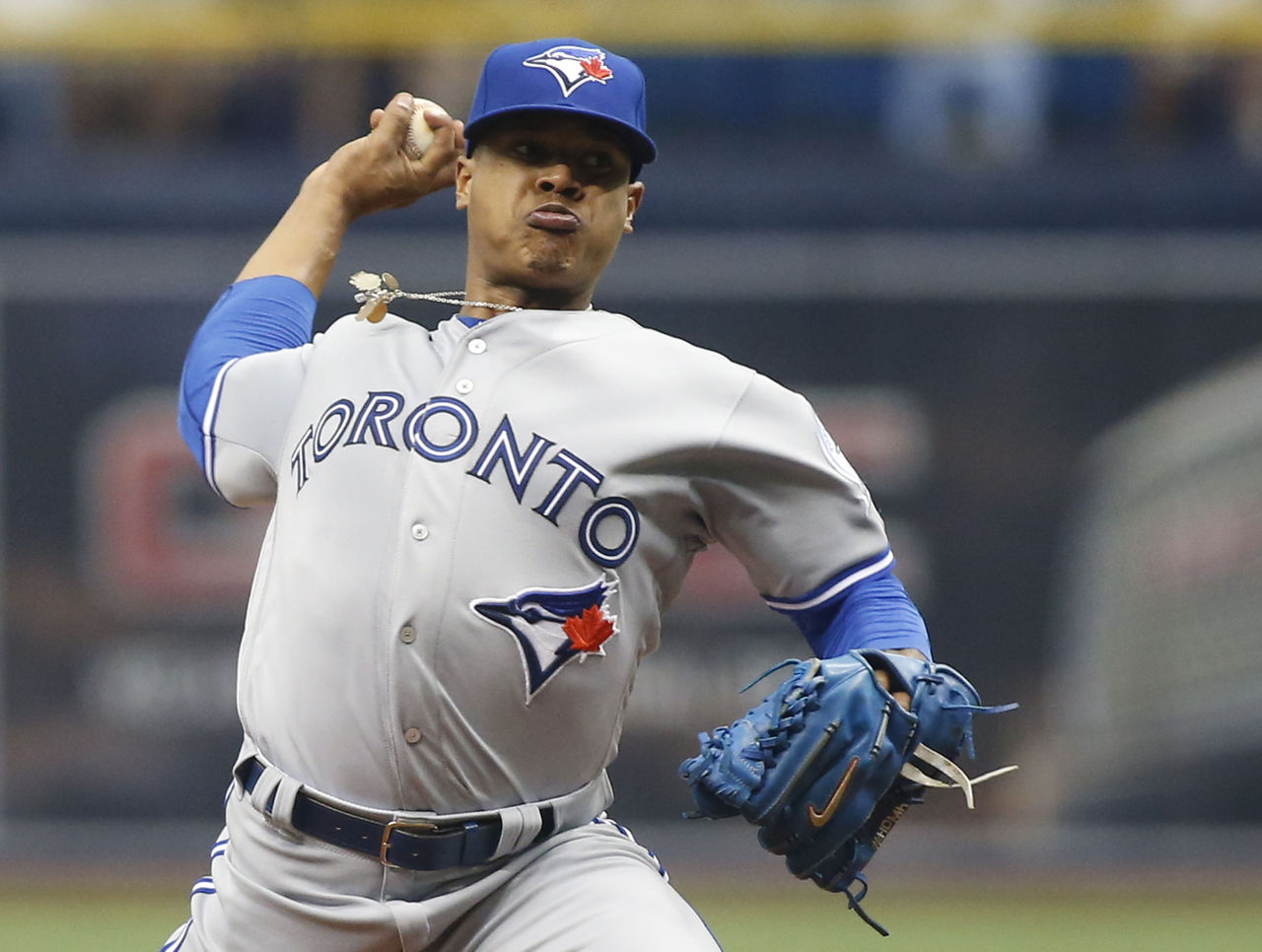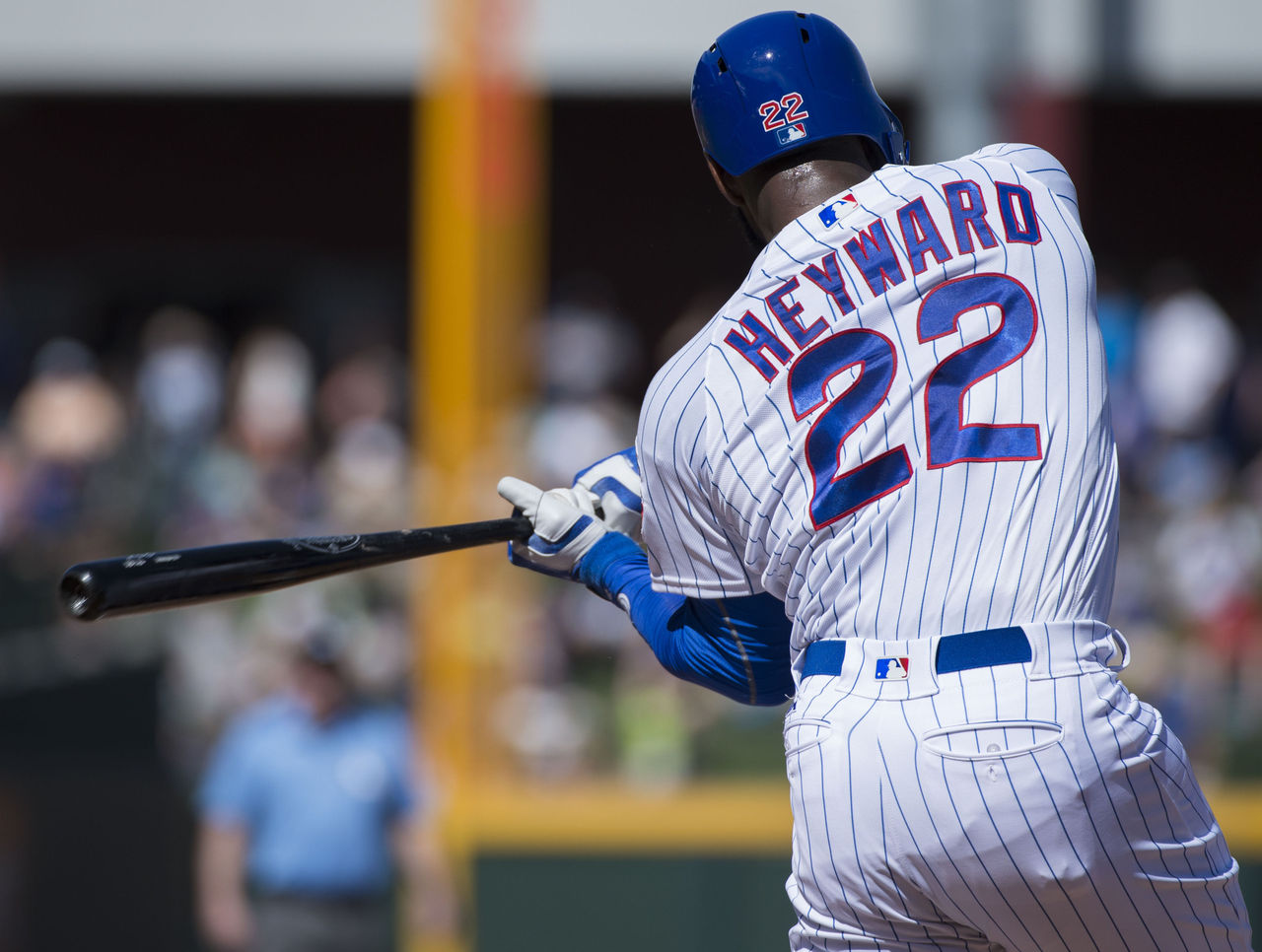What's wrong with these 4 slumping stars?

It isn't early anymore.
In April and May, when sample sizes are too small to arrive at any legitimate conclusions, you can rightfully point to the calendar whenever someone harps about Player X's early-season woes. With less than three weeks to go until the All-Star break, though, that defense no longer works. It's now time to accept there might be substantive reasons behind your favorite player's struggles.
With that said, let's look at four players who have struggled through the first almost-half of 2016 and try to figure out why they're scuffling so hard. (Note: Stats are accurate through June 22).
Giancarlo Stanton, OF, Miami Marlins

| - | OPS | AVG | ISO | BB/K |
|---|---|---|---|---|
| 2016 | .737 | .211 | .216 | 0.35 |
| Career | .895 | .265 | .272 | 0.41 |
The results are discouraging, to be sure, especially with the Marlins actually playing decent baseball, but what's more disconcerting is that Stanton has just looked like a totally different, much-less-imposing hitter since returning from the hand injury that cost him the second half of 2015. Over the previous three seasons, for instance, Stanton hit the ball in the air more often than 82 percent of the 233 hitters with at least 1,000 plate appearances. But this year, Stanton is hitting ground balls on 44.8 percent of his balls in play, his highest rate since 2011. Stanton's 41 percent pull rate is the second-lowest of his career, too, and his hard-contact frequency is down a whopping 12.2 percent from 2015.

His problems aren't limited to contact quality, either, as Stanton has whiffed on a career-high 16.5 percent of the pitches he's seen this year, fueling a ghastly 33.7 percent strikeout rate that ranks third-highest among qualified hitters. He may be pressing, but it really seems like he just isn't recognizing pitches, as his 33.3 percent contact rate on pitches outside the strike zone is 15 percent below his career mark and easily the worst in baseball.
Marcus Stroman, RHP, Toronto Blue Jays

Clearly, there's a curse on the Blue Jays' Opening Day starters. In his defense, Stroman has done a fine job suppressing home runs (0.84 per nine) this year - something pundits predicted he'd struggle with in the majors - and his left-on-base rate is abnormally low for an extreme ground-ball pitcher, but there's no denying the 25-year-old is allowing hard contact at an alarming rate. This year, only eight pitchers have a higher average exit velocity (min. 100 BBE) than Stroman, who has allowed contact of 100 mph or higher a whopping 95 times already. No other pitcher has given up contact that hard more than 79 times.
Highest exit velocities, 2016, min. 190 batted balls
| Pitcher | Avg. Exit Velo (MPH) | BABIP | Hard-Hit % |
|---|---|---|---|
| Phil Hughes | 92.4 | .323 | 36.9% |
| Mike Leake | 92.3 | .271 | 36.2% |
| Ivan Nova | 91.9 | .309 | 32.5% |
| Marcus Stroman | 91.8 | .319 | 33.6% |
| Sonny Gray | 91.4 | .312 | 35.1% |
For Stroman, who owns a 7.59 ERA and .353 opponents' batting average since May 17, it boils down to location. With his sinker-centric arsenal, Stroman - who barely gets any whiffs in the zone and doesn't have the stuff to get batters to chase often - can't afford to be consistently missing his spots, but he's been leaving a lot of balls over the heart of the plate lately, especially with his two-seamer, which has produced a 32.3 percent line-drive rate over his last seven starts.
Todd Frazier, 3B, Chicago White Sox

| - | OPS | AVG | ISO | BB/K |
|---|---|---|---|---|
| 2016 | .769 | .201 | .263 | 0.51 |
| Career | .782 | .251 | .212 | 0.37 |
You have to give Frazier some credit. Not many hitters could lead the majors in home runs and still be a league-average hitter, more or less. The thing is, though, Frazier's knack for putting balls over the fence belies a contact profile that's actually pretty awful. While his 47.9 percent fly-ball rate is just about identical to his 2015 mark when he hit 35 homers with a 114 wRC+ for Cincinnati, nearly one-quarter of those fly balls are infield pop-ups (which never go for base hits).
If nearly half his batted balls are hit in the air, with a league-worst 24.2 percent of them being infield flies, that means Frazier is creating an automatic out in nearly 13 percent of his plate appearances that end with contact. Combine that with a career-high 23.3 percent strikeout rate and a pull-happy approach that makes it virtually impossible for him to get a ground-ball base hit, barring some serious adjustments, Frazier is going to have to hit 45 homers this year to be an average offensive player.
Jason Heyward, RF, Chicago Cubs

| - | OPS | AVG | ISO | BB/K |
|---|---|---|---|---|
| 2016 | .660 | .236 | .099 | 0.53 |
| Career | .774 | .265 | .159 | 0.58 |
It's a good thing Heyward continues to play elite defense. Otherwise, the Chicago Cubs would be on the hook for $184 million for a guy hitting worse than Ketel Marte. Almost three months into his tenure on the North Side, not only has Heyward's power dwindled to Nick Ahmed-ian levels, but the 26-year-old is also striking out at his highest rate since 2012, resulting in a career-worst 83 wRC+ through 62 games. Though Heyward is seeing more fastballs than ever before atop the Cubs' lineup - a whopping 65.7 percent of all pitches he's seen, tops among qualified hitters - he hasn't adjusted well to his new heater-heavy diet, hitting just .246 with a meager 88.5 mph exit velocity against hard stuff.
| Season | Avg vs. FB | Exit velo |
|---|---|---|
| 2013 | .275 | - |
| 2014 | .259 | - |
| 2015 | .319 | 91.3 |
| 2016 | .246 | 88.5 |
Increasingly, Heyward seems uncomfortable turning on fastballs, as he's swung at less than half the strikes he's seen on the inner-third of the plate in 2016 while offering a of 54.6 percent of strikes on the outside part of the dish. His plate discipline is still there insofar as he isn't chasing bad pitches more than he has in the past, but he isn't making quality contact on good pitches, either: Heyward's 30.3 percent soft-contact rate is the highest of his career.